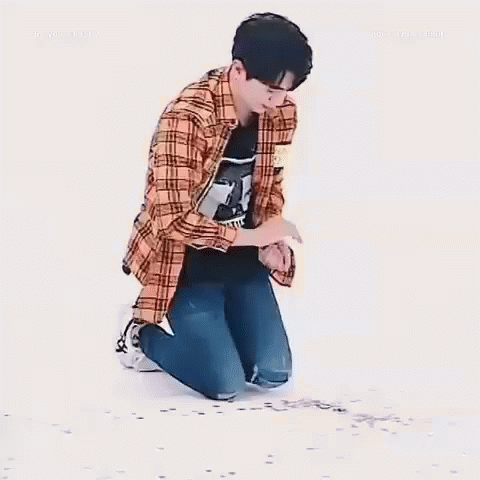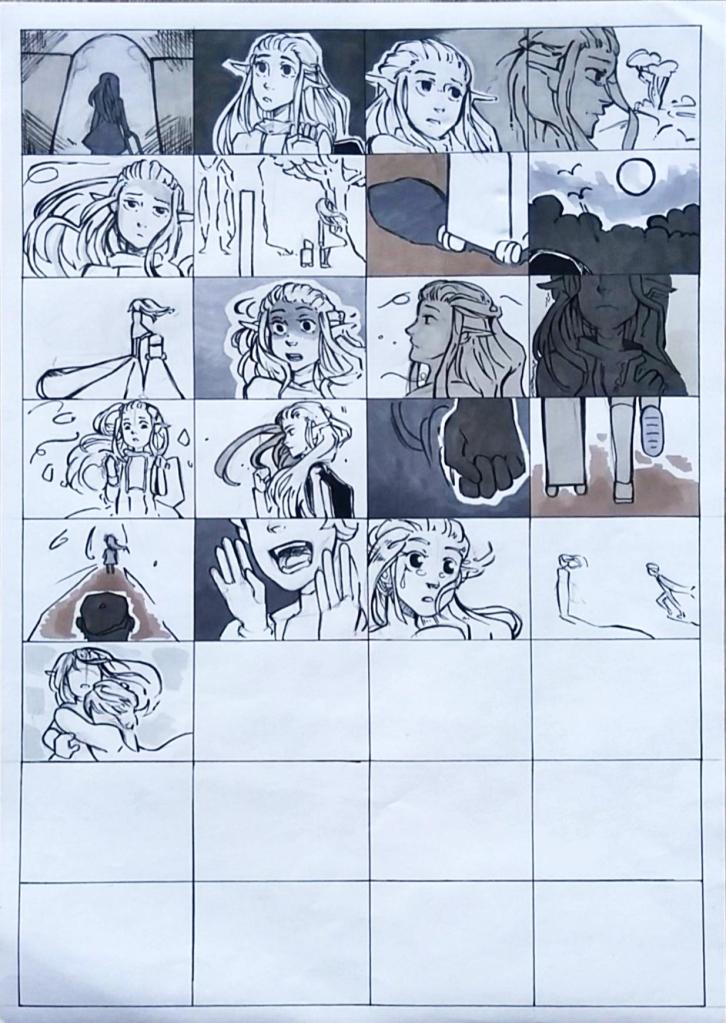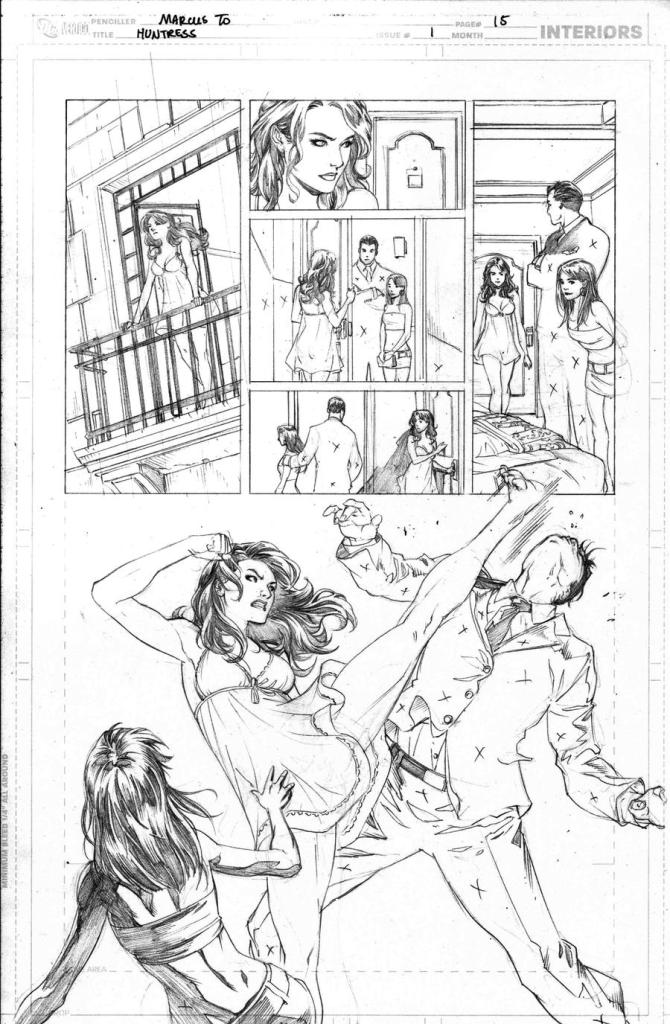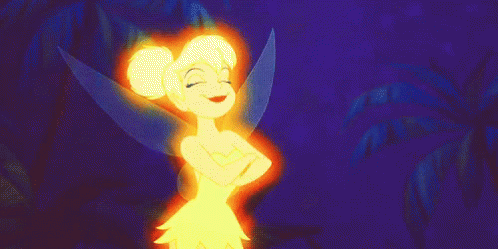A guide filled with useful tips and tricks! By artleeheart
This blogpost is dedicated to anyone who is thinking of starting their own comic book but who doesn’t know how to start yet. We are here to discuss every kind of aspect when it comes to creating a comic book on your own. Before you go into the unknown path are you willing to pursue this adventure filled with knowledge and any obstacle? Are you ready to get down to business?! Be aware that what you are about to read is based on peoples experiences throughout the years. Besides that, there will be also plenty of resources combined in the post. Don’t just simply take every word from it as you got to unlock your own skills, patience and planning method.

Step number one: Read any type of informational platform about comics or subject related topics.
Research is the key to success, if you have barely any idea on what to check up on one suggests explore and seek what is out there on the internet or nearby bookstores! Depending on what you are looking for whether this inspiration, an actual good article, blog post (like this one) or a guiding book. Many options are waiting for you. Reading books might be of use and leading you on to the right direction. Something you have to take into account as well is will you choose for a webcomic or would you rather go for the normal approach?
Here are three offers you could look into:
– Webtoon (webcomic platform to post your comics online and gain an audience faster.)
– Tapas (webcomic platform to post your comics online and gain an audience faster.)
– Ava’s demon (online webcomic.)
(Tenor, 2016)

Step number two: press start to continue…
Many wouldn’t lie if what they are about to tell you it is so tempting to not grab a piece of paper and go straight into sketching your ideas out. The urge is so big but you have to control yourself (for now, pinkie promise. The patience will pay off). One know in this state it is so hard to not do it, especially when someone tells you not to. Believe me when someone’s says that once you cross the line you will commit to the time. You have to be sure you have plenty enough of interest to pursue your storyline and characters right through the very end. Give yourself that last bit of confirmation. If you don’t stand behind your decision for the full one hundred per cent, you might regret it afterwards and all the hard work might be for nothing.
(Tenor, 2019)

Step number three: Brainstorm every single bit out on paper.
Taking the first step is probably most of the difficult steps you have to take during the process. You have to think from scratch and it involves a ton of creative thinking. At a certain point, your brain has to go in work out mode. Depending on where you would like to go from this point, let’s just say start with a mind map. In a mind map, nothing can go wrong. Even if the word has no purpose at all or doesn’t even connect with the others it may be valid for later. There is no boundaries involved in here so feel free to write anything down that pops up into your mind like an add. Let your imagination take over the paper and don’t stop if you think it isn’t enough. Most people will do the same and maybe even later on make a more specific mind map dedicated to the story. The image to the left is an example of how you can do it. You can specify in what for sort of settings you want to create the world with the words you have been collecting. Consider using elements like the theme, genre, the plot in short and maybe some potential characters.
(Personal Project 1, 2019)

Step number four: Spread the word!
Whenever you are finished with your concept idea, go out there and share your idea with others you believe can give you good advice or feedback. This is essential for your progress. After all, you put in a lot of dedication and determination to create your graphic novel. Besides if you know how to convey your message to the public, you know you are doing a great job in what you try to say or do. It is a good sign showing you love your work!
(Tenor, 2020)

Step number five: Now it is time to write everything down.
You can almost grab your art supplies and papers but first, let’s wrap your story before you begin drawing everything out. A recommendation is writing everything first. Thanks to step number three, you already helped yourself by gathering words to transform the whole thing into a script. You can along the way go back through your text files and easily make changes. It’s pretty hard to do that when you are producing the drawings. You don’t want to spend an entirety redrawing every single page out if something isn’t going as planned. Do what you feel like is within your comfort zone but there is a guarantee it might get messy, people can tell from their experiences.
(Tenor, 2016)

Step number six: Collect data for your character.
If you are pleased with what you have written out in a document so far then it’s time to think of the appearance of your characters. At least you got the big part out of the way! Not everyone is fond of going into depth of their plot since it varies many guidelines. For example, does it have an emotional response? Is the journey exciting and filled with enough dangerous outcomes to keep the audience entertaining? Congratulations for making it this far to step number six! You are now free to grab a pencil or any sort of art supply you have at home to start visualising about your main protagonists or side characters!
From what you can collect to come to the final outcome of your character, here are some following steps on how to get to your perfect design.
– Make a mood board.
See the whole mood board set up as one big reference material. Prepare yourself to go on a hunt to find the ideal fit for your creatures description. For example, you wrote down that your character was born and raised in the desserts. You have a specific type of clothing in your mind somewhere close inspired by Mad Max. Find examples online that meets your expectations. Please, try to avoid Pinterest, it is an endless pit of inspiration where you won’t get easily out from. Yes, it may be true that somewhere there may lay potential images out there. You won’t stop from one image to another. Look for even other platforms like Instagram or Tumblr to find something that pleases you. At the end collect all the things you have gathered around and give bring them into one big collage.
– Choose your colours wisely.
Have you ever considered on what for kind of direction you like to go to? Does he, she or they have a warm or cold colour palette. If they are intended to be seen as a criminal then dark colours such as purple, grey, black, dark red can have a much more evil impact than pink or green. Colours are essential and important to your process. Embrace yourself and get familiar with the primary, secondary and tertiary colours as this will support your balance between your characters design and their personality.
– What will the style be?
Have you ever considered what type of direction you want to have your art style? Will you go for a simple style like plain cartoon with small detailed shading or do you prefer to have a much more realistic approach like comics as Marvel? What type of strategy will you take when it comes to colouring, will it be flat and without lines or do like to use your traditional abilities? A suggestion for you is to figure out where you want to be with your style. Construct a separate mood board and assemble all your favourite art styles you like or follow. Whether they are famous artists you follow on Instagram or someone you know from and form a whole new attractively technique you can and follow for the rest of the production.
(Tenor, 2017)

Step number seven: Bring your characters to life!
It should be now easier to begin your character design without worrying you don’t know where to think from scratch. In your earliest step, you gathered some potential referral sources for your concept phase when it comes by giving life to your characters. Take matters into your own hands. Make sure you have a front, side, and back view of the personage. A tip what you might want to take into account is if you are planning to give someone long flowy hair, make sure that you leave the hair as it is so the viewer (and you too) can see what the back looks like. This will remain visible and it won’t distract. Add some iconic facial expressions that suit the personality of your main protagonist or even side characters. Consider to add even accessories what helps emphasise the character. Got any sidekicks? Get them too together in the character sheet since they bring more value to your creature.
(Tenor, 2014)

Step number eight: Now, let’s think of a thumbnail.
The layout of each page is of great importance! You might want to work on the composition and the overall flow. The transition between panels have to stay connected so it is easy to read for the reader. How smoother the overflow of the panels are, the more the appealing they are! You can think of by designing the thumbnails! As you can see on the image right next to the text you can find an example of what it means. It may consume some of your time but it is there to assist you.
(Personal Project 2, 2020)

Step number nine: Over to designing the panels!
The thumbnails are there to assist your panels. It is a preparation for visualising the layouts. It should make the realisation simple as you have an idea on how to approach the scenes. You have done the planning for what is about to happen during each scene. Now it is time to put those thumbnails into action and transform them into comic frames. Will the character overlap the frame or do you prefer to fill in the entire page across your book with action? Remember to keep your transitions organised so that they are easy to follow! A suggestion you don’t necessarily have to follow but it is a tip you can make use of. Work on a piece of paper, it doesn’t have to look already on its finest yet. You can always edit the mistakes with digital tools to make small or big adjustments. Leave some space left for text as you can add these later in the program. You can lightly write the text down and replace them with typography later instead.
(0boywonder0, 2011)

Step number ten: Let’s wrap things up!
You are getting so close towards the end goal, the only thing that is waiting ahead of you are the following.
– Search for mistakes before drawing the line art.
When you have finished all your sketches, it might be handy to scan in your work and search for the mistakes you might have made. You will save time during your line process and you can continue faster towards the colour phase!
– Fill in everything with colour.
This task speaks for itself. To even speed your process up why not make a colour palette for each character or environment for its own. This makes sure you won’t pick out the wrong colour choice and everything stays in touch.
– The final touch, special effects and adding typography.
What most artists do when they are done with colouring is giving the illustration that final touch such as lighting or playing with the colour contrast within the Adobe Photoshop controls. Sometimes they even apply noise but it all depends on you on how satisfied you are with the artwork! Don’t forget to place the typography in the speech bubbles and let someone else double-check your grammar.
– Where are you going to publish your masterpiece?
Ever thought during your process where you want to publish your book? Do you know a few places where you can present your book to the store or do you know someone within your network who can plan something out for you? Investigate optional book publishers or share your book first with family and friends and let them spread the word for you!
(Tenor, 2016)
Reference list:
Inspired articles
Blurb (N.D.) 9 Steps to Start & Create a Comic Book Available at: https://www.blurb.com/blog/start-a-comic-book/ (Accessed: 26/03/20)
Brubaker, J. (2014) 10 THINGS BEFORE YOU START A COMIC OR GRAPHIC NOVEL! Available at: https://www.makingcomics.com/2014/09/24/10-things-start-comic-graphic-novel/ (Accessed: 26/03/20)
Creative Blog Staff. (2019) 27 top character design tips. Available at: https://www.creativebloq.com/character-design/tips-5132643 (Accessed: 26/03/20)
Other rescources
0boywonder0. (2011) ‘Huntress 1 pg15.’ [DeviantArt]. 8th November. Available at: https://www.deviantart.com/0boywonder0/art/Huntress-1-pg15-267875870?q=favby:queensarwa/41117056&qo=151 (Accessed: 27/03/20)
Studiobinder. (2019) What is Conflict in a Story? A Quick Reminder of the Purpose of Conflict. Available at: https://www.studiobinder.com/blog/what-is-conflict-in-a-story/ (Accessed: 26/03/20)
Anon. (2016) Computer Look GIF. [GIF]. Tenor.sl. Available at: https://tenor.com/view/computer-look-looking-search-searching-gif-7343220 (Accessed: 01/06/2020)
Anon. (2019) Hmmm Thinking GIF. [GIF]. Tenor.sl. Available at: https://tenor.com/view/hmmm-thinking-confused-gif-14450462 (Accessed: 01/06/2020)
Anon. (2020) Hmm Fascinating GIF. [GIF]. Tenor.sl. Available at: https://tenor.com/view/hmm-fascinating-hmm-fascinating-sloth-cute-gif-16026612 (Accessed: 01/06/2020)
Anon. (2016) Cat Laptop GIF. [GIF]. Tenor.sl. Available at: https://tenor.com/view/cat-typing-type-gif-5142304 (Accessed: 01/06/2020)
Anon. (2017) Sung Jin KPop GIF. [GIF]. Tenor.sl. Available at: https://tenor.com/view/day6-sungjin-kpop-weeklyidol-money-gif-10276893 (Accessed: 01/06/2020)
Anon. (2014) Ssb Wii U GIF. [GIF]. Tenor.sl. Available at: https://tenor.com/view/super-smash-brothers-melee-super-smash-bros-smash-super-mario-mario-gif-3527189 (Accessed: 01/06/2020)
Anon. (2016) Tink Damnright GIF. [GIF]. Tenor.sl. Available at: https://tenor.com/view/tink-damnright-finished-my-own-gif-5522944 (Accessed: 01/06/2020)